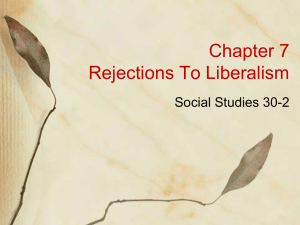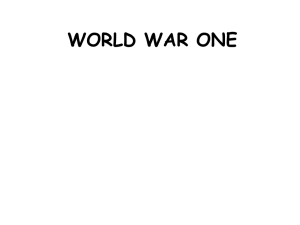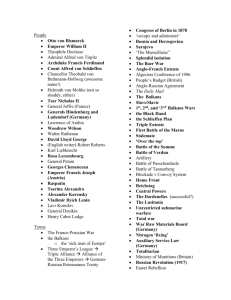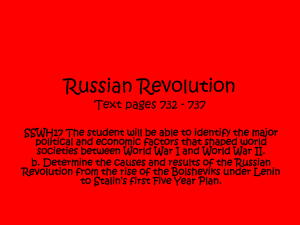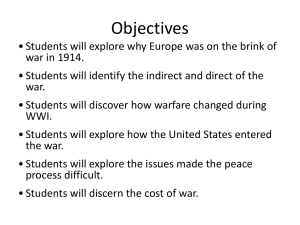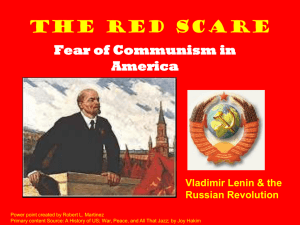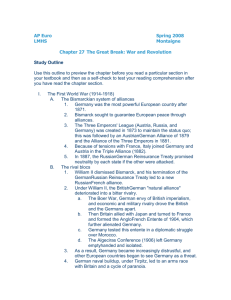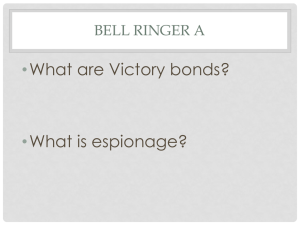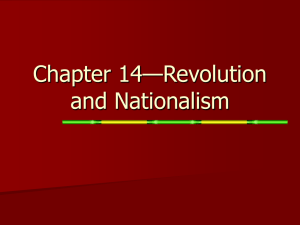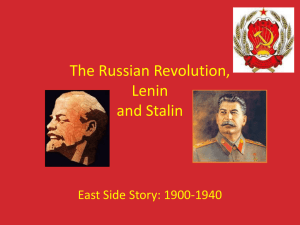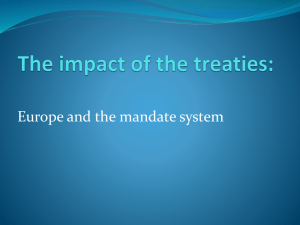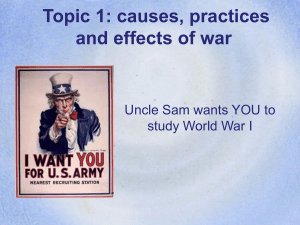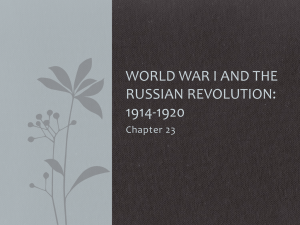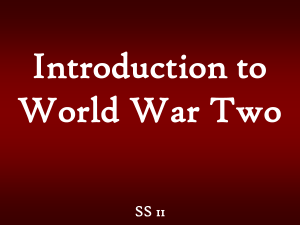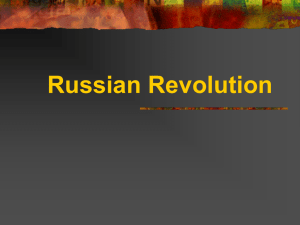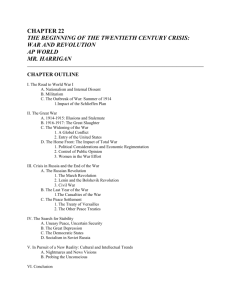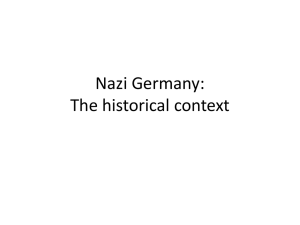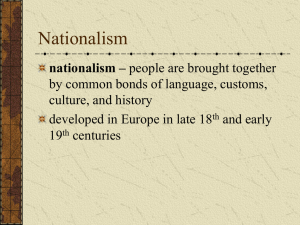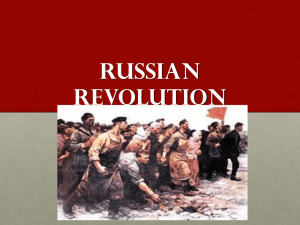World War I
advertisement
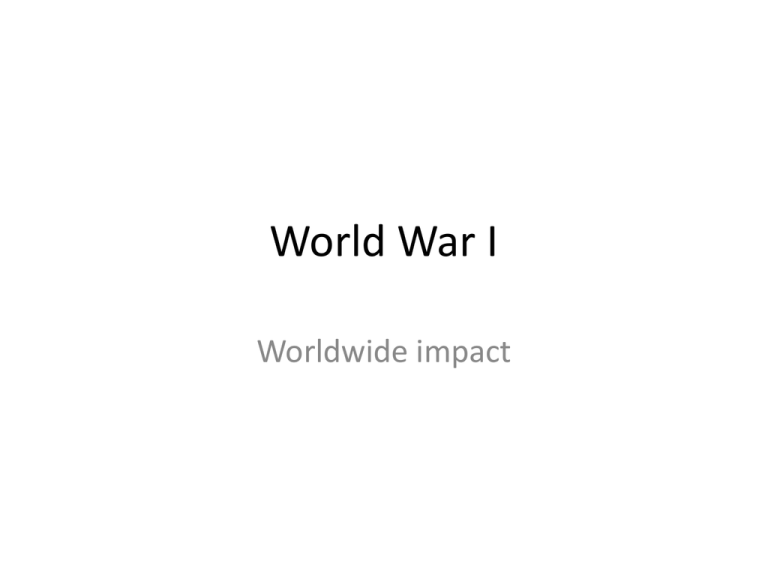
World War I Worldwide impact World War I (1914-1918) • World War I (1914-1918) was caused by competition among industrial nations in Europe and a failure of diplomacy. The war transformed European and American life, wrecked the economies of Europe, and planted the seeds for a second world war. Questions • What were the factors that produced World War I? • What were the major events of the war? • Who were the major leaders? • What were the outcomes and global effects of World War I? • What were the terms of the Treaty of Versailles? Alliances • The alliance system in Europe started with Prussia • Prussia wanted to unite the German states into a German nation • Germany united (allied) with Austria-Hungary and Italy • France and Germany were enemies and so France allied with Russia Alliances • Great Britain remained neutral until Germany started to build up its navy • Great Britain loosely allied with France and Russia forming the Triple Entente • Nationalism – intense pride for one’s homeland was a powerful idea in Europe • Self-determination – the idea that people who belong to a nation should have their own country and government, was a basic idea of nationalism Alliances • A small country called Serbia, allied with Russia, wanted a unified Balkan nation • A Serb national assassinated Archduke Franz Ferdinand • This assassination forced Austria-Hungary to declare war with Germany siding with them • Russia, allied with Serbia, declared war with France siding with them (France wanted Germany defeated) MAIN causes of WW I Militarism / Alliances / Imperialism / Nationalism Spark: Archduke Ferdinand (Austria) assassinated Causes of World War I • Alliances that divided Europe into competing camps • Nationalistic feelings • Diplomatic failures • Imperialism • Competition over colonies • Militarism World War I The war began in Europe in 1914: Central Powers Germany and AustriaHungary Allies Britain, France, and Russia. Major Events • Assassination of Austria’s Archduke Ferdinand, he was shot by a Serbian nationalist. • United States enters the war - 1917 • Russia leaves the war – 1917 (Communist Revolution led by Lenin) Major leaders • Woodrow Wilson – President of United States • Kaiser Wilhelm II – German leader Outcomes and global effect • Colonies’ participation in the war, which increased demands for independence • End of the Russian Imperial, Ottoman, German, and Austro-Hungarian empires • Enormous cost of the war in lives, property, and social disruption Treaty of Versailles • Forced Germany to accept responsibility for war and loss of territory and to pay reparations • Limited the German military • League of Nations Treaty of Versailles (Verse-EYE) • The French and English insisted on punishment of Germany. • A League of Nations was created. • National boundaries were redrawn, creating many new nations. 1917 Revolution and Rise of Communism • Tsarist Russia entered World War I as an absolute monarchy with sharp class divisions between the nobility and the peasants. The grievances of workers and peasants were not resolved by the Tsar. Inadequate administration in World War I led to revolution and an unsuccessful provisional government. A second revolution by the Bolsheviks created the communist state that ultimately became the U.S.S.R. Questions • Why did Russia erupt in revolution while fighting in World War I? • How did communism rise in Russia? Causes of 1917 Revolutions • • • • Defeat in war with Japan in 1905 Landless peasantry Incompetence of Tsar Nicholas II Military defeats and high casualties in World War I. Russian Revolution – Czar Nicholas II’s reforms were too little too late – No industrial power = no national power – Loss to the Japanese was humiliating announcement of weakness – WWI participation sucked Russia dry and made civil war inevitable – Weak resistance to well organized and mobilized Bolshevik radicals – Total abdication and assassination end the Romanov Dynasty Rise of communism • • • • Bolshevik Revolution and civil war Vladimir Lenin’s New Economic Policy Joseph Stalin, Lenin’s successor According to communism, history is dominated by the struggle between the bourgeoisie and the proletariat – the upper class and the laborer. • Karl Marx, a German economist/philosopher is credited with the idea of communism. Vladimir Lenin • Marxist Revolutionary • NEP allowed some capitalism and helped Soviet economy recover from early communist stagnation • Dies of stroke, 1924 Leon Trotsky • Co-founder with Lenin • Organized and trained the RED ARMY • Practice of decimation made Red Army “effective” • Rival of Stalin’ • Assassinated in Mexico with an ice-pick Understanding the League of Nations and the mandate system • After World War I, international organizations and agreements were established to avoid future conflicts. • What was the League of Nations and why did it fail? • Why was the mandate system created? League of Nations • • • • International cooperative organization Established to prevent future wars United States not a member Failure of League because it did not have power to enforce its decisions The mandate system • During World War I, Great Britain and France agreed to divide large portions of the Ottoman Empire in the Middle East between themselves. • After the war, the “mandate system” gave Great Britain and France control over the lands that became Iraq, Transjordan, and Palestine (British controlled) and Syria and Lebanon (French controlled) • The division of the Ottoman Empire through the mandate system planted the seeds for future conflicts in the Middle East.



